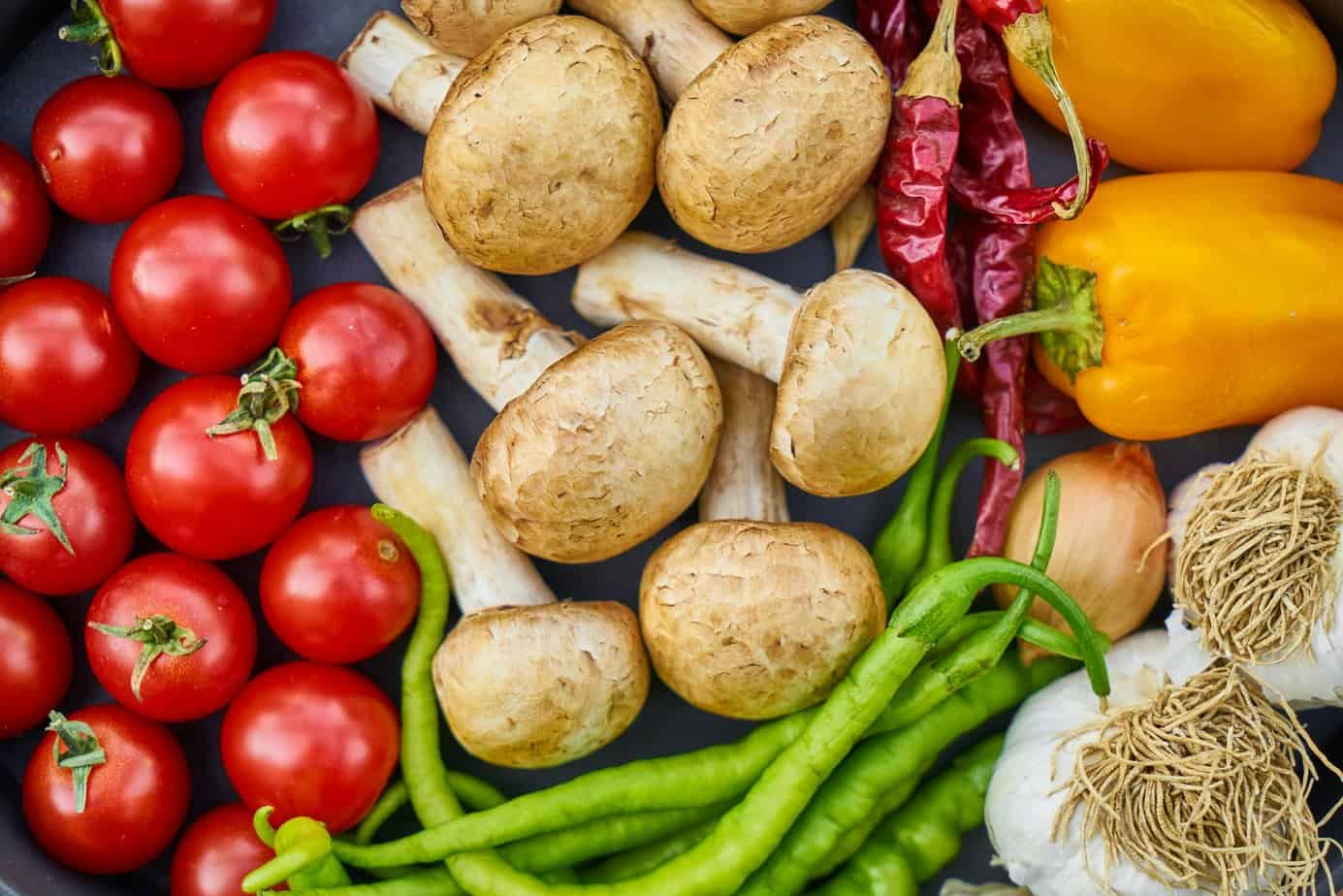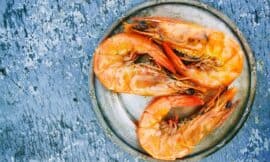How to defrost vegetables? It’s quite simple. The best way to defrost vegetables is to place them in a small bowl and let them thaw at room temperature for 15 to 20 minutes. In the world of quick and healthy cooking, frozen vegetables are a staple. They offer the convenience of long shelf-life and the assurance of retained nutrients, picked at their peak of ripeness.
Ever found yourself wondering about the best way to defrost vegetables quickly? We’ve put together a comprehensive guide to answer that exact question. From simple microwave tricks to the simplicity of room temperature thawing, we’ve got all the tips you need on defrosting vegetables.

In this article, we delve into the art of frozen vegetable preparation, ensuring that your cooking is both effortless and nutritious. We’ll guide you through various thawing frozen produce methods, from quick microwave techniques to the more gradual refrigerator thawing, catering to your diverse cooking needs. Understanding the nuances of cooking methods for frozen veggies is key to retaining their textures and flavors, preserving the very essence of their freshness.
Our comprehensive guide will provide you with practical tips on retaining nutrients in frozen vegetables, ensuring that your meals are not only delectable but also packed with goodness. We understand that every vegetable has its unique requirements for defrosting and cooking, and our insights will help you master these with ease.
Elevate your frozen vegetable preparation skills, making every meal an opportunity to enjoy wholesome, delicious, and perfectly thawed vegetables.
Understanding Frozen Vegetables
Frozen vegetables are a cornerstone of convenient and healthy eating, but what exactly happens to vegetables when they’re frozen? The process typically involves flash freezing vegetables soon after harvest, which is crucial for preserving their nutritional value and freshness. This method ensures that vegetables are frozen at their peak ripeness, locking in essential nutrients and flavors.
Recent research highlights the nutritional benefits of frozen vegetables. A study conducted by the University of Georgia, in partnership with the Frozen Food Foundation, found that the nutrient content of many frozen fruits and vegetables is generally equal to, and in some cases greater than, their fresh counterparts. This is attributed to nutrient degradation that can occur in fresh produce during storage.(Source)
Additionally, research verified by sources like the Cleveland Clinic and Houston Methodist Hospital corroborates the finding that frozen vegetables are nutritionally similar to fresh vegetables.(Source)
Freezing and Nutrient Retention while defrosting vegetables
One of the biggest advantages of frozen vegetables is their ability to retain nutrients. When vegetables are picked and frozen within hours of harvest, they preserve more of their nutrients, vitamins, and minerals. This rapid process, often involving a step called blanching, halts enzyme activity that can lead to spoilage and nutrient loss.
The freezing process is like nature’s pause button for vegetables. It ensures that the veggies maintain a high nutrient profile, often higher than fresh vegetables that have been stored for extended periods. However, it’s important to note that some nutrient degradation can occur during the blanching process, which is generally a brief heat treatment done before freezing.
Different Methods on How to Defrost Vegetables:
Below are some of the different methods on how to defrost vegetables perfectly:
- Refrigerator Thawing: Transfer frozen vegetables to the refrigerator for a slow, safe thawing process. This method is ideal for maintaining texture and is best done overnight. This method is suitable if you are wondering how to defrost vegetables overnight.
- Cold Water Thawing: Submerge the vegetables in cold water, changing the water every 30 minutes until thawed. This method is quicker than refrigerator thawing and is suitable for larger quantities of vegetables. This method is suitable if you are wondering how to defrost vegetables in water.
- Microwave Thawing: Use the defrost or low-power setting to thaw vegetables in the microwave. Microwave oven is the fastest method to defrost vegetables, but requires immediate cooking after thawing to prevent bacterial growth.
- Room Temperature Thawing: Spread vegetables in a single layer at room temperature for a quick thaw. This method is suitable for small amounts and should be monitored closely to avoid over-thawing.
- Cooking Directly from Frozen: Many vegetables can be cooked directly from their frozen state, especially in methods like steaming, boiling, or stir-frying. This preserves texture and nutrients and eliminates the need for thawing.
Thawing Techniques for Frozen Vegetables
The process of thawing frozen vegetables is crucial in preserving their texture and flavor. Unlike meats and seafood, vegetables require specific thawing techniques to maintain their structural integrity and prevent them from becoming limp or soggy. In this section, we’ll explore effective methods to thaw frozen vegetables, ensuring they remain vibrant and nutritious for your meals.
Understanding and applying the right thawing techniques for frozen vegetables can significantly enhance the quality of your dishes. Whether you choose to thaw in the refrigerator, under cold water, or in the microwave, or opt to cook them directly from frozen, each method has its own set of benefits. By mastering these techniques, you can ensure that your frozen vegetables are always perfectly prepared for your culinary creations.
How to defrost vegetables in refrigerator
The refrigerator method is a slow and safe way to thaw frozen vegetables. By placing the vegetables in the refrigerator, you allow them to thaw gradually, which helps in retaining their texture and nutritional value. This method typically takes several hours or overnight, making it an ideal option if you plan ahead. Remember, slower thawing ensures the vegetables stay crisp and fresh, making them suitable for a variety of dishes.
How to defrost vegetables in cold water
An alternative method for thawing frozen vegetables is using cold water. This involves immersing the vegetables, while they are still in their packaging or a sealed container, in cold water. The water should be changed every 30 minutes to ensure consistent thawing. This method is faster than refrigerator thawing and is suitable for vegetables that require a quicker thaw without losing their texture.
How to defrost vegetables in microwave
For those in a rush, microwaving frozen vegetables is a quick thawing option. Using the defrost setting or a low power level, you can thaw vegetables according to their weight. It’s important to remove the vegetables from their packaging before microwaving. This method is fast, but be cautious as it can unevenly thaw the vegetables and might start cooking them. To avoid this, stir the vegetables periodically during the process.
Handling Specific Types of Frozen Vegetables
When it comes to preparing specific types of frozen vegetables, understanding each vegetables characteristics is key to achieving the best results. Each vegetable has its own set of requirements when it comes to defrosting. Below are some guidelines for handling common frozen vegetables:
Corn: For whole-kernel corn, it’s recommended to water blanch the corn for about 4 minutes before freezing. To prepare cream-style corn, blanch for 4 minutes on the cob or steam blanch for 6 minutes, then cool, drain, cut, and scrape the cobs before freezing. When defrosting frozen corn, consider methods like sautéing or steaming to maintain its texture and sweetness.
Leafy Greens: Leafy greens such as spinach, kale, and collards require special attention due to their high water content. When freezing, it’s important to blanch these greens to preserve their color and nutrients. For defrosting, steaming is a preferred method as it prevents the greens from becoming mushy. If using frozen spinach, it’s advisable to thaw and squeeze out excess water using a tool like a potato ricer to avoid excess moisture in dishes.
Edamame and Green Garbanzo Beans (Chickpeas): Frozen edamame and green garbanzo beans are known for their convenience and consistent quality. They can be used directly from the freezer in various dishes like dips, salads, stir-fries, and soups. Defrosting by steaming or sautéing work well for these beans, retaining their vibrant color and nutty flavor.
Eggplant: When preparing eggplant for freezing, it’s recommended to harvest it before seeds become mature and when the color is uniformly dark. Eggplant should be washed, peeled, and then blanched before freezing, especially if it’s to be used in fried dishes or casseroles. Blanching diced pieces or strips for about 2 minutes in boiling water containing citric acid or lemon juice helps preserve the quality of eggplant.
Zucchini: Frozen zucchini is versatile and can be used in various cooking methods such as steaming, grilling, oven-roasting, or even as a side dish. While fresh zucchini is most abundant in the summer, frozen zucchini ensures year-round availability. To bring out their natural sweetness and flavor, grilling or roasting zucchini is recommended
Bell Peppers and Onions: Frozen bell peppers and onions are great for adding flavor to a wide range of dishes. They can be used straight from the freezer, making them a convenient option for quick meals.
Defrosting methods for various vegetables
| Vegetable | Preparation for Freezing | Defrosting Methods | Tips & Notes |
|---|---|---|---|
| Corn | Water blanch for 4 minutes | Sautéing, Steaming | Retains texture and sweetness |
| Leafy Greens | Blanch to preserve color and nutrients | Steaming | Thaw and squeeze out excess water |
| Edamame | Direct freezing | Steaming, Sautéing | Retains vibrant color and nutty flavor |
| Green Garbanzo Beans | Direct freezing | Steaming, Sautéing | Versatile in various dishes |
| Eggplant | Blanch before freezing | Baking, Grilling | Peel, blanch, and freeze for quality retention |
| Zucchini | Direct freezing | Grilling, Oven-roasting, Steaming | Grilling brings out natural sweetness |
| Bell Peppers | Direct freezing | Sautéing, Grilling, Oven-roasting | Versatile in dishes like fajitas and soups |
| Onions | Direct freezing | Sautéing, Grilling, Oven-roasting | Adds flavor to a wide range of dishes |
Managing Moisture in Frozen Vegetables
When cooking frozen vegetables, managing moisture is key to achieving the desired texture of the vegetable. Excess moisture can lead to soggy veggies, so it’s important to use techniques that help retain the vegetable’s integrity.
Managing moisture in frozen vegetables is about choosing the right thawing and cooking methods, drying the vegetables properly after thawing, and adjusting the cooking times. By following these tips, you can enjoy frozen vegetables that are flavorful, crisp, and as close to fresh as possible.
Below are some tips for effectively managing moisture in frozen vegetables:
Thawing Considerations: Thawing frozen vegetables correctly plays a crucial role in moisture management. While some vegetables benefit from a quick thaw, others can be used directly from the freezer. For instance, thawed frozen corn can be tossed into salads, or frozen cauliflower can be pureed into smoothies. When serving cold or at room-temperature dishes, consider whether the vegetables need to be thawed at all, as they can help chill dishes like pasta salad. On the other hand, for dishes where excess moisture could be problematic, such as on top of a pizza, it’s better to thaw the vegetables first.
Cooking Methods: Choosing the right cooking method is essential to prevent excess moisture in frozen vegetables. Microwaving or boiling often results in limp and mushy vegetables. Instead, try roasting frozen vegetables, which is an excellent way to achieve crispness. A good technique is to preheat a baking sheet with oil in the oven before adding the vegetables. This helps in getting a nice, roasted texture. Additionally, when stir-frying or sautéing, it’s crucial not to overcook frozen vegetables, as they cook more quickly than fresh ones.
Drying After Thawing: If you choose to thaw frozen vegetables, make sure to dry them properly before cooking. After thawing, place the vegetables on a paper towel to remove any excess water and moisture. This step is especially important for vegetables like spinach, which can retain a lot of water. Using a potato ricer can be an effective way to squeeze out water from cooked spinach. Patting the vegetables dry before tossing them into the pan ensures that they remain crisp and flavorful.
Adjusting Cooking Times: Remember that frozen vegetables often require shorter cooking times compared to their fresh counterparts. This is because they’re not as firm as fresh vegetables, so they can be cooked in half the time when roasting or stir-frying. Adjusting the cook time appropriately will help in retaining the texture and preventing the vegetables from becoming soggy.
In this comprehensive guide, we’ve explored the ins and outs of defrosting and cooking frozen vegetables. This article answers the question on how to defrost vegetables. From understanding the nutritional benefits of frozen vegetables, which are often comparable to their fresh counterparts, to mastering various thawing techniques like refrigerator, cold water, and microwave methods, we’ve covered essential tips to ensure your veggies retain their texture
Frequently Asked Questions on How to Defrost Vegetables
This section serves as your trusty FAQ, shedding light on common queries on how to defrost vegetables.
Can I Cook Frozen Vegetables Without Thawing Them?
Yes, you can cook many frozen vegetables without thawing them first. Cooking vegetables directly from their frozen state can actually help retain their texture and nutrients. This method is especially effective for individually frozen items like peas, corn, and broccoli, which can be steamed, boiled, stir-fried, or roasted directly from the freezer. However, some vegetables like leafy greens may need to be thawed and drained to remove excess water before use.
Can I Cook Frozen Vegetables Without Thawing Them?
Once thawed, frozen vegetables should be treated like fresh produce. They can typically be kept in the refrigerator for up to a few days. It’s important to store them in an airtight container or resealable bag to maintain their freshness. Keep in mind that the texture and quality of thawed vegetables might not be as crisp as when they were first frozen, so it’s best to use them in cooked dishes where texture is less critical.
Can I Cook Frozen Vegetables Without Thawing Them?
To retain the maximum nutrients in frozen vegetables, use cooking methods that limit water contact and cooking time. Steaming and microwaving are excellent methods as they cook vegetables quickly without much water, thus preserving more vitamins and minerals. If boiling is necessary, use as little water as possible and do not overcook the vegetables. Quick stir-frying also helps in retaining nutrients and adds a delightful crunch to the vegetables.
Can I Cook Frozen Vegetables Without Thawing Them?
Frozen vegetables are often just as nutritious as fresh vegetables. They are typically picked and frozen at their peak ripeness, a time when they are most nutrient-packed. The freezing process generally does not destroy nutrients; in fact, it helps preserve them until the vegetables are cooked. While some nutrient loss can occur during the initial blanching process before freezing, frozen vegetables are a convenient and healthy alternative to fresh produce
Here are some of the best ways to defrost frozen foods. This also has indepth information on how to defrost chicken and how to defrost bread quickly and how to defrost fish.




